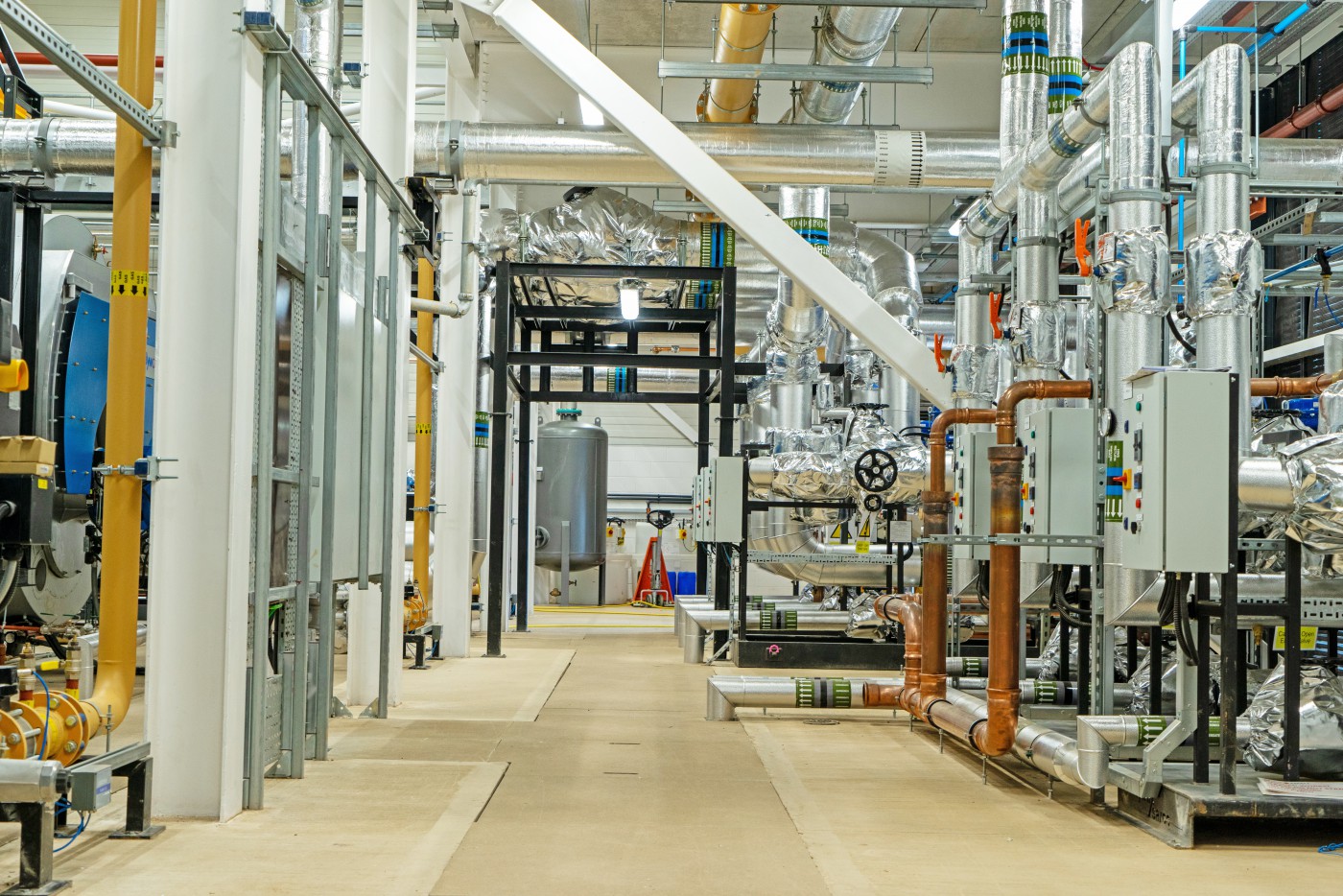NTH Solutions LLP (NTH), as managers of North Tees and Hartlepool NHS Foundation Trust’s estates and facilities, identified a requirement to upgrade/replace their on-campus energy centre (coming to the end of its life after operating for almost 50 years).
Image: Existing energy centre now ready for decommissioning

The decision to build a new energy centre instead of refurbishing existing was based upon long-term benefit (higher quality facility to last 50 more years) rather than short-term goal (shorter programme). In addition, the hospital may have risked loss of resilience had they chosen refurbishment, leading to potential risk to hospital activities and patient care.
Recognising the £14m new build’s MEP services accounted for 80% of works and the complexity of existing service break-ins to allow the new energy centre to be brought online, NTH procured a M&E contractor (NG Bailey [NGB]) as Principal Contractor (PC); this marked a new approach to project delivery for NTH.
The contract celebrated the continuation of a 50-year relationship between NGB and University Hospital of North Tees, as original services were installed by NGB in the 1960’s.
The services-focused strategy delivered greater coordination of building services, demonstrating better understanding of future maintenance needs including bespoke Level 2 BIM model to be used by estates team.
NGB designers, BIM coordinators, and engineers worked with client’s design team to initially develop the model and understand interfaces between trades and collaborate between parties for a buildable solution.

NGB used an offsite strategy to deliver a proportion of building services, securing on time delivery of high-quality products and accommodating for the restricted site surrounded by hospital buildings and carparks, residential housing, and two schools. Additionally, 3,900m of self-contained busbar was installed rather than traditional cable containment, reducing number of workers in existing hospital so limiting clinical down time.
Electrical shutdowns were meticulously planned collaboratively with NTH, with each carefully detailed on a risk assessment and method statement, to cause minimal disruption.
Steve Taylor, Assistant Director of Estates and Capital of NTH, said: “Best description I can give of this site and how work has been carried out is: the hospital had a heart transplant without anybody knowing”.

The energy centre provides a much more reliable service to the hospital to support it 400,000 patients, along with significantly reducing its energy consumption and carbon footprint.
Architecturally the building isn’t your typical energy centre; it’s a wood-clad building and designed to be more visually appealing for the surrounding community.
Working closely with NTH, with regular meetings and daily briefings, enabled us to implement a logistics strategy to remove 35,000 tonnes of surplus topsoil from site without disruption to the hospital or community. 20,000 of this were donated to North East charity Down to Earth, who reuse and recycle materials to grow fresh produce. The community group brings together people of all ages across Teesside, with produce donated to local food banks.
 Image: New build energy centre construction site closely located to residential area
Image: New build energy centre construction site closely located to residential area
NG Bailey already shared the project via an article for Health Estates Journal:
https://content.yudu.com/web/1u0jl/0A1umgt/HEJFebruary2019/html/index.html?page=52&origin=reader
We would be open to discussing with CENE sharing the best practice through other means.
Key achievements
- Excellent health and safety records:
Offsite factories:
- Zero RIDDORS
- AFR = 0
- AIR = 0
Project site:
- 0 RIDDORS
- AFR = 0
- AIR = 9
2. Quality offsite products manufactured, delivered, and installed on site to support hospital’s continuous operation and deliver products as required.
- Plant skids:
-
- – Two steam to heating PHX
- – One steam to hot water PHX
- – Five steam meter
-
- 60 heavy-duty steam pipework goal post bracketry
- Five heavy-duty pipework headers
- 24 tunnel services modules (linking to existing hospital) containing heating, domestic, and compressed air pipework
- 500+ welded pipe spools (95% of requirement) – steam, gas, LPHW, oil
- Photovoltaic rooftop panels
- 7 MW CHP
- 3,900m busbar
3. Early offsite strategy delivered high-quality solutions to site on a just-in-time basis, removing 6,000 labour hours with estimated 10 tonne carbon reduction: improving health and safety, significantly reducing hot works on site.


